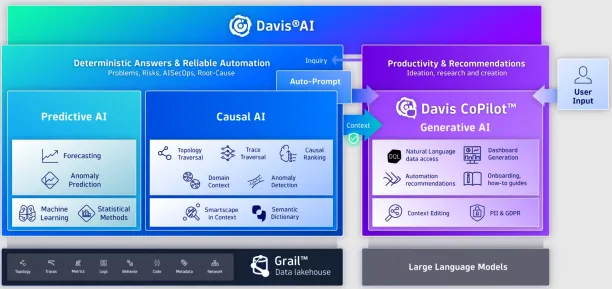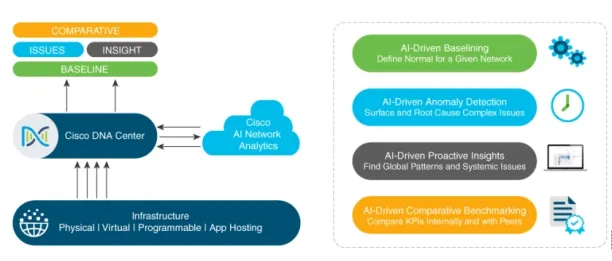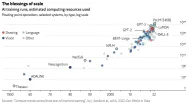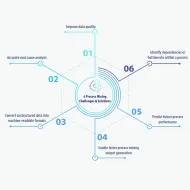Top 5 AI Network Monitoring Use Cases and Real-Life Examples in '24
Enterprise IT leaders are increasingly adopting artificial intelligence driven automation to handle the complex interconnections across clouds, digital platforms, and devices. A recent survey reveals that 96% of IT decision-makers have already implemented AI in their network operations or plan to do so shortly.1
The integration of artificial intelligence (AI) into network monitoring enhances availability and performance. As networks grow more complex, AI’s ability to rapidly analyze large datasets and predict issues becomes essential. This helps maintain stable operations and bolster security by automating complex processes and preemptively managing potential problems, making AI network monitoring vital for optimal network performance.
AI Use Cases In Network Monitoring
By using AI capabilities, businesses can enhance their network monitoring practices in various ways. Here are some use cases of AI in network monitoring:
- Anomaly detection: AI can quickly identify unusual patterns or deviations from normal network behavior, which might indicate a security breach or system failure.
- Predictive analytics: By analyzing historical data, AI can predict potential network failures or performance degradations before they occur.
- Automated configuration and optimization: AI can automate routine network configuration tasks and optimize network settings based on current traffic patterns and demands.
- Security enhancement: AI enhances network security by detecting and responding to threats in real time. It can identify malware, ransomware, and other malicious activities quickly, minimizing potential damage.
- Root cause analysis: When problems occur, AI can help diagnose the root cause more quickly than traditional methods. By correlating various data points and identifying patterns, AI reduces the time needed to troubleshoot and resolve issues.
- Capacity planning: AI can forecast future network needs based on trend analysis, helping organizations plan upgrades and expansions more effectively.
Real life Examples
Here are some real-life examples of AI applications in network monitoring:
Dynatrace Davis AI
Dynatrace offers an AI engine called Davis, which is integral to its software intelligence platform. Davis analyzes data across the entire digital ecosystem, including clouds, applications, and infrastructure.
Case study 1
Prior to 2016, BARBRI operated in a hybrid environment, utilizing both on-premises servers and cloud services. Recognizing the need to scale its operations and enhance resource utilization, BARBRI decided to transition to a fully cloud-based infrastructure.
Dynatrace’s platform was deployed to monitor BARBRI’s entire Azure environment, ensuring that the migration and ongoing operations were managed efficiently. The AI capabilities of Dynatrace allowed BARBRI to monitor and gain real-time insights into BARBRI’s topology. Therefore, BARBRI scaled its Azure environment to satisfy demand increases during peak times and improve user experience.2

Source: Dynatrace Davis AI User Interface3
Cisco AI Network Analytics
Cisco’s AI Network Analytics, part of its DNA Center, uses machine learning to provide insights into network performance. It helps network managers predict issues before they happen, optimize network performance based on predictive analytics, and fine-tune the network proactively. Cisco AI Network Analytics has been used in various scenarios, such as detecting unusual patterns that could indicate security threats or operational problems, thus allowing for quicker remedial action.

Source: Cisco AI Network Analytics Features 4.
Case Study 2
REWE Group implemented Cisco AI Network Analytics to enhance their network management capabilities. This AI/ML technology integration into Cisco DNA Center has provided significant operational benefits. It has notably reduced the time needed to resolve network issues, thereby allowing the IT team to allocate more time to new projects and innovations that are crucial to business operations. The application of AI/ML has simplified the handling of network workloads, making daily management tasks less time-consuming and highlighting critical alerts that indicate connectivity or performance issues.5.
Anadot
Anodot is a provider of AI-powered analytics solutions designed to detect anomalies in data in real-time. Its platform utilizes machine learning algorithms to identify deviations from expected patterns, enabling businesses to address issues and capitalize on opportunities.
Case study 3
LivePerson implemented Anodot’s real-time analytics to monitor a complex array of nearly 2 million metrics every 30 seconds across its global data centers. This deployment was critical to ensure 24×7 service uptime and continuous availability of customer data. Anodot’s AI capabilities allow LivePerson to detect and respond to anomalies in real time, thereby maintaining high customer satisfaction and operational efficiency. This ensures that any significant changes, such as those due to feature updates, are immediately known and addressed, enhancing the overall user experience on the LivePerson platform. 6
Juniper Networks
Juniper Networks is a networking technology, offering solutions for enterprise and service provider networks. Its AI-Native Networking Platform leverages artificial intelligence and machine learning to optimize network performance, enhance security, and automate network management tasks.
Case study 4
Expert utilized the Juniper AI-Native Networking Platform, introduced by Wayv, a specialist in wireless network engineering. This adoption aimed to optimize network management and user experience across its operations. The AI capabilities of the Juniper platform provided Expert with enhanced operational insights and automation, significantly improving network reliability and security. Notably, the Marvis Virtual Network Assistant identified and resolved issues such as VLAN misconfigurations and DHCP errors efficiently. As a result, Expert achieved a streamlined and responsive network environment that supports its diverse operational needs. LivePerson platform. 7
DataDog
Watchdog, Datadog’s AI engine, offers automated notifications, insights, and root cause analyses derived from observability data spanning the entire Datadog platform.
Case study 5
Zakir Mohammed’s team at Toyota Motor North America has strategically integrated Datadog, drawn to its precision monitoring and advanced AI/ML capabilities. Deploying Datadog proved efficient, slashing setup time by deploying the agent within minutes and cutting Mean Time to Resolution (MTTR) by 80%, streamlining troubleshooting processes. When network disruptions plagued Toyota’s Automated Guided Vehicles (AGVs), Datadog identified the root cause, saving the company substantial production costs and resolving the issue within hours. Transitioning from reactive to proactive monitoring, Toyota utilizes Datadog’s Watchdog feature to forecast and prevent future outages, enhancing operational reliability. This case study is a good example for AI based network monitoring. Datadog and AI/ML technologies enable Toyota to innovate and fostering mobility.
FAQs for AI Network Monitoring
How does AI improve network monitoring?
AI enhances network monitoring by automating tasks, improving anomaly detection accuracy, offering predictive insights, and managing large-scale and complex networks more effectively.
Are there any drawbacks to AI network monitoring?
While AI network monitoring offers numerous benefits, challenges include integration complexities with existing systems and the requirement for significant initial setup and tuning.
Can AI network monitoring adapt to changes in network architecture?
Yes, AI network monitoring systems are generally designed to adapt to changes in network architecture. They continuously learn from network behavior, allowing them to adjust to new devices, configurations, and traffic patterns effectively.
How does AI network monitoring handle security?
AI network monitoring improves security by continuously analyzing network traffic for unusual patterns, detecting potential threats in real-time, and automating responses to security incidents, which enhances overall network resilience.
Can AI network monitoring reduce operational costs?
Yes, AI network monitoring can significantly reduce operational costs by automating routine tasks, minimizing downtime through predictive maintenance, and optimizing network performance, which in turn reduces the need for frequent hardware upgrades and manual troubleshooting.
For more on network monitoring
- Top 5 Network Monitoring Tools in Windows in 2024
- Top 7 Free Network Monitoring Tools based on 1,000+ Reviews in 2024
- Top 10 Network Monitoring Software based on 3,000+ Reviews
External Links
- 1. ”CIO Report: AIOps Going Mainstream to Resolve Network Complexity”. Comcast Business Accessed: April 23 2024.
- 2. “Dynatrace Case Study”. Microsoft. Accessed: April 24 2024.
- 3. “Dynatrace Website”. Accessed: April 24 2024.
- 4. “Cisco AI Network Analytics Overview”. Accessed: April 24 2024.
- 5. “Cisco AI Network Analytics: Making Networks Smarter and Simpler to Manage“. Accessed: April 24 2024.
- 6. “Anadot Case Study”. Accessed: April 24 2024.
- 7. “Juniper Case Study”. Accessed: April 24 2024.

Cem is the principal analyst at AIMultiple since 2017. AIMultiple informs hundreds of thousands of businesses (as per Similarweb) including 60% of Fortune 500 every month.
Cem's work has been cited by leading global publications including Business Insider, Forbes, Washington Post, global firms like Deloitte, HPE, NGOs like World Economic Forum and supranational organizations like European Commission. You can see more reputable companies and media that referenced AIMultiple.
Throughout his career, Cem served as a tech consultant, tech buyer and tech entrepreneur. He advised enterprises on their technology decisions at McKinsey & Company and Altman Solon for more than a decade. He also published a McKinsey report on digitalization.
He led technology strategy and procurement of a telco while reporting to the CEO. He has also led commercial growth of deep tech company Hypatos that reached a 7 digit annual recurring revenue and a 9 digit valuation from 0 within 2 years. Cem's work in Hypatos was covered by leading technology publications like TechCrunch and Business Insider.
Cem regularly speaks at international technology conferences. He graduated from Bogazici University as a computer engineer and holds an MBA from Columbia Business School.
Sources:
AIMultiple.com Traffic Analytics, Ranking & Audience, Similarweb.
Why Microsoft, IBM, and Google Are Ramping up Efforts on AI Ethics, Business Insider.
Microsoft invests $1 billion in OpenAI to pursue artificial intelligence that’s smarter than we are, Washington Post.
Data management barriers to AI success, Deloitte.
Empowering AI Leadership: AI C-Suite Toolkit, World Economic Forum.
Science, Research and Innovation Performance of the EU, European Commission.
Public-sector digitization: The trillion-dollar challenge, McKinsey & Company.
Hypatos gets $11.8M for a deep learning approach to document processing, TechCrunch.
We got an exclusive look at the pitch deck AI startup Hypatos used to raise $11 million, Business Insider.
To stay up-to-date on B2B tech & accelerate your enterprise:
Follow on


Comments
Your email address will not be published. All fields are required.